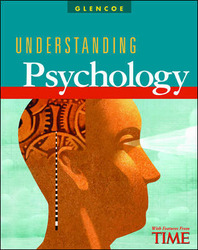1 A) Ivan Pavlov B) B.F. Skinner C) John B. Watson D) Edward Tolman 2 unconditioned to refer to __________.A) a stimulus or event that increases the likelihood that behavior will be repeated B) learning from the consequences of behavior C) stimuli and the automatic, involuntary responses they caused D) the process in which reinforcement is used to sculpt new responses out of old ones 3 A) an unconditioned response B) an unconditioned stimulus C) a conditioned response D) a conditioned stimulus 4 A) the ability to respond differently to similar but distinct stimuli B) responding similarly to a range of similar stimuli C) the gradual disappearance of a conditioned response D) the reappearance of a conditioned response after extinction 5 A) it is the study of how voluntary behavior is affected by its consequences B) it occurs when a person or animal operates on or causes some change in the environment C) it is a form of learning closely associated with the psychologist B.F. Skinner D) it utilizes modeling to achieve learning 6 A) a positive reinforcement to operant conditioning B) a neutral stimulus in classical conditioning C) a secondary reinforcement to operant conditioning D) part of the response chain 7 A) fixed-ratio B) variable-ratio C) fixed-interval D) variable-interval 8 A) aversive control B) classical conditioning C) escape conditioning D) modeling 9 A) shaping B) classical conditioning C) avoidance conditioning D) social learning 10 A) aversive stimuli can produce unwanted side effects B) people learn to avoid the person delivering the aversive consequences C) punishment is likely to suppress, rather than eliminate, inappropriate behavior D) punishment usually leads to the increase, or repetition, of the inappropriate behavior 11 A) social learning involves how people make decisions and act upon the information available to them B) latent learning and learned helplessness are examples of modeling C) social learning consists of cognitive learning and modeling D) behavior modification uses learning principles to change people's actions or feelings 12 A) observational learning and learned helplessness B) observational learning and disinhibition C) latent learning and imitation D) latent learning and learned helplessness 13 A) it is not immediately observable as a change in behavior at the time of learning B) it is not usually reinforced when learning occurs C) it leads to depression and a sense of helplessness D) it utilizes a cognitive map 14 A) token economy B) behavior modification C) cognitive map D) operant conditioning 15 A) a rat being rewarded a food pellet when it presses down on a bar B) a dog salivating when it hears a tuning fork C) a player being rewarded coins from a slot machine D) a chimpanzee's learned behavior being rewarded with poker chips with which it can "buy" peanuts 16 A) a behavioral contract B) response chains C) aversive control D) escape conditioning





